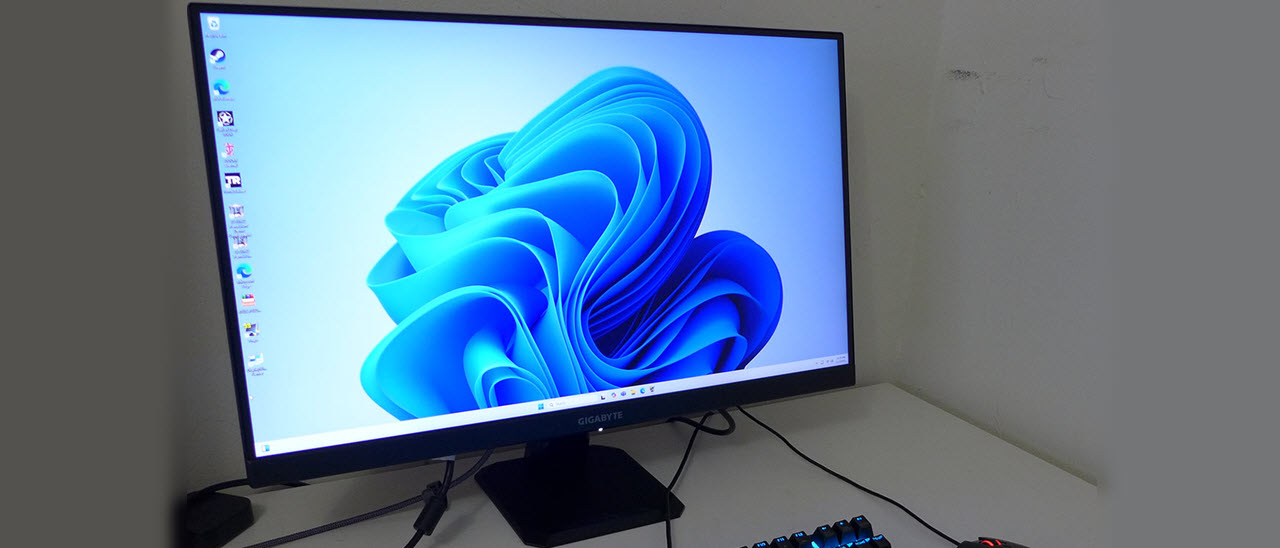Why you can trust Tom's Hardware
Our HDR benchmarking uses Portrait Displays’ Calman software. To learn about our HDR testing, see our breakdown of how we test PC monitors.
The GS27QXA supports HDR10 content with a seamless switch to HDR mode. There are no image adjustments available, but you will see an increase in light output. No dimming is included so you won’t see more contrast but overall, the HDR image offers a little more punch.
HDR Brightness and Contrast
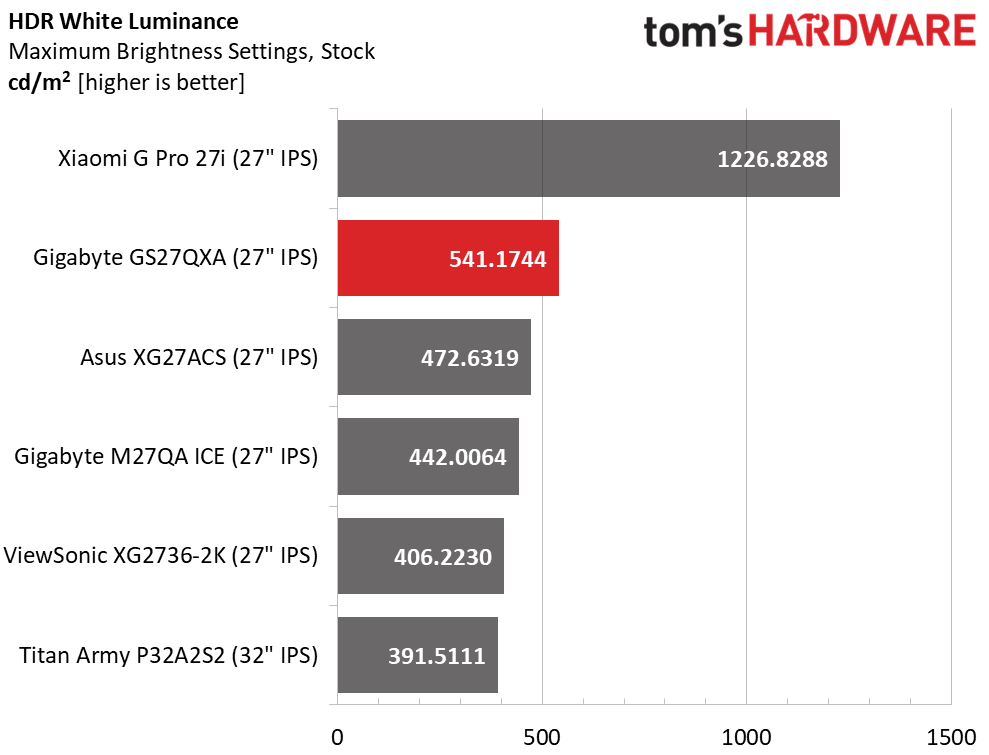
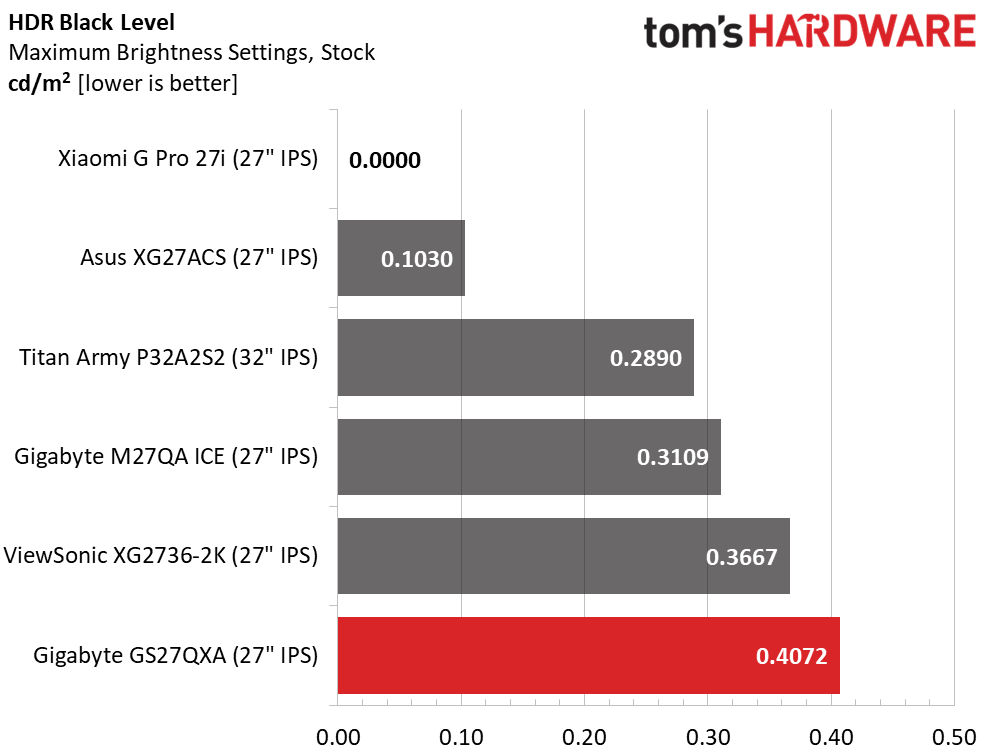
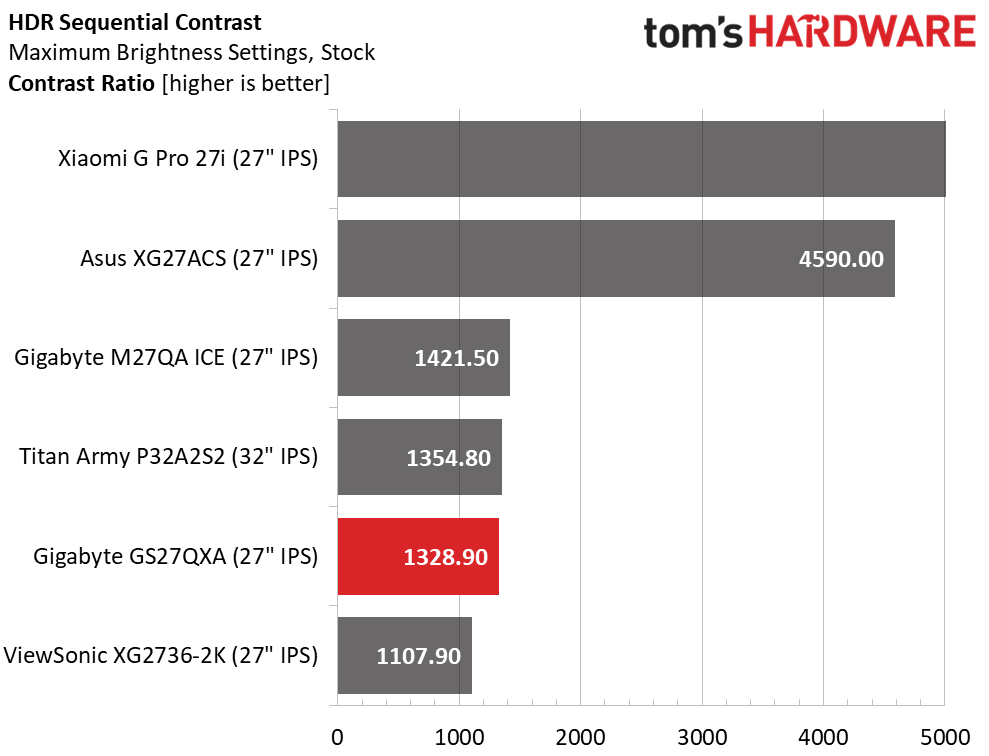
I was pleasantly surprised by the GS27QXA’s increased light output in HDR mode. Most budget displays have the same peak white level for SDR and HDR but here, you get another 110 nits. This makes highlights pop and gives the image more verve. There’s no more contrast to be had since there’s no dimming or dynamic option. But the picture does look better for HDR content than SDR. You can see that the Xiaomi sits apart from the others with its zone dimming Mini LED backlight which gives it greater output and lower black levels. Also note that the Asus has a dimming feature that increases its HDR contrast to 4,590:1.
Grayscale, EOTF and Color
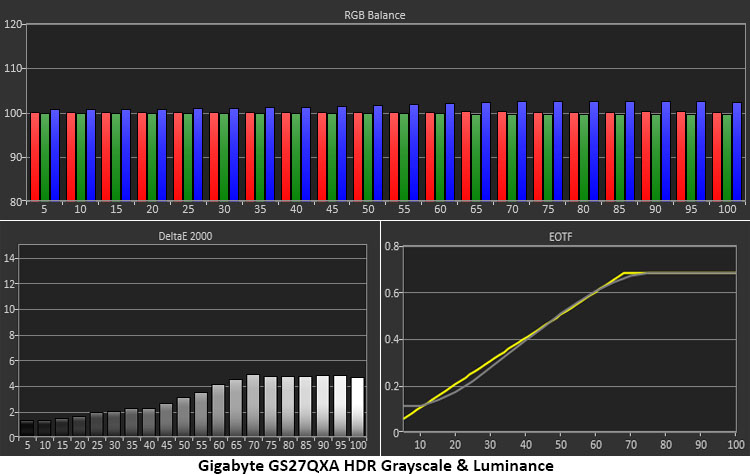
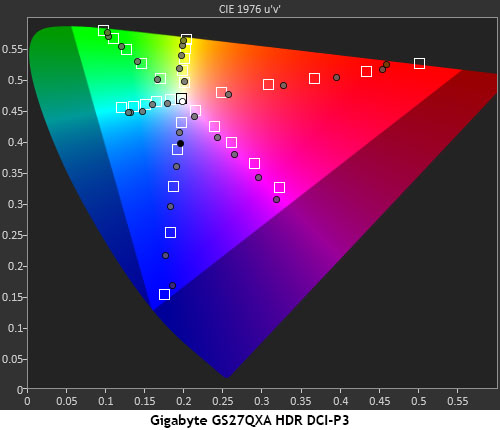
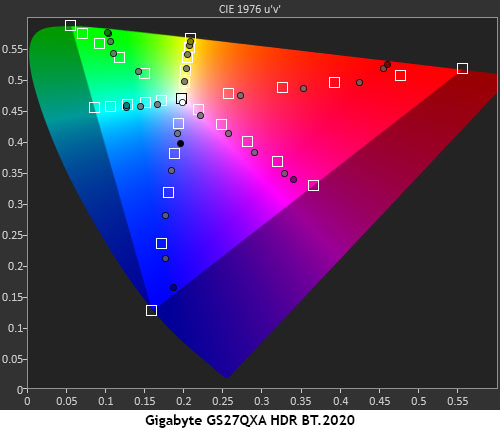
The GS27QXA’s HDR grayscale is a tad cool but not enough that actual content is degraded. Thanks to a near perfect luminance curve, HDR is tone mapped correctly and looks the way its creators intended. Only a slightly elevated black level seen at the 0-10% range makes shadow areas a little bright. The detail is clearly there but not as dark as it should be. This is solid performance.
In the HDR gamut tests, the GS27QXA covers all of green and blue and only comes up a little short in red where it tops out at 90% saturation. This tracks with what I measured for SDR. Inner points are a little past their targets which makes color a bit more vivid without obscuring fine detail. There are slight hue errors in cyan and magenta, but their impact is not significant. In the BT.2020 test, the GS27QXA tops out at 80% red, 75% green and 95% blue, decent performance for a budget display.
Test Takeaway: Since there’s no dynamic backlight dimming, the GS27QXA won’t deliver life-changing HDR but it has impressive brightness that takes it past many competitors with over 540 nits peak. It makes the most of its wide color gamut with good accuracy and just the right amount of oversaturation. The HDR image is pleasing and more impactful than its SDR counterpart.
MORE: Best Gaming Monitors
Get Tom's Hardware's best news and in-depth reviews, straight to your inbox.
MORE: How We Test PC Monitors
MORE: How to Buy a PC Monitor

Christian Eberle is a Contributing Editor for Tom's Hardware US. He's a veteran reviewer of A/V equipment, specializing in monitors. Christian began his obsession with tech when he built his first PC in 1991, a 286 running DOS 3.0 at a blazing 12MHz. In 2006, he undertook training from the Imaging Science Foundation in video calibration and testing and thus started a passion for precise imaging that persists to this day. He is also a professional musician with a degree from the New England Conservatory as a classical bassoonist which he used to good effect as a performer with the West Point Army Band from 1987 to 2013. He enjoys watching movies and listening to high-end audio in his custom-built home theater and can be seen riding trails near his home on a race-ready ICE VTX recumbent trike. Christian enjoys the endless summer in Florida where he lives with his wife and Chihuahua and plays with orchestras around the state.
